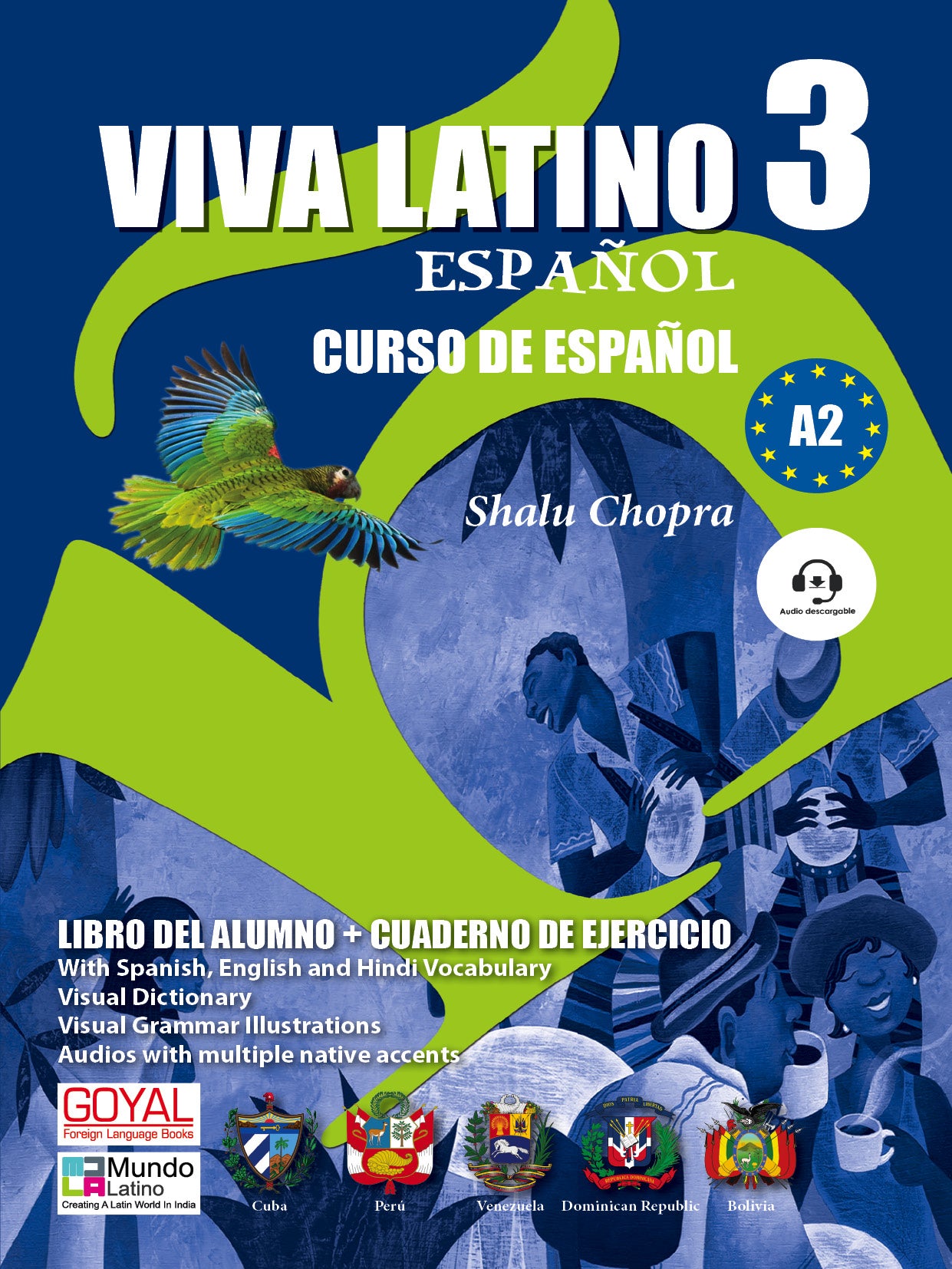- Home
- Imported Books Note more than 5%
- Viva Latino 3 - A2 Curso De Español (TEXTBOOK+WORKBOOK)
Viva Latino 3 - A2 Curso De Español (TEXTBOOK+WORKBOOK)
- Author: Shalu Chopra
- Binding: Paperback
- ISBN-10: 9390474806
- ISBN-13: 9789390474806
- Language: Spanish
- Level: A2
- Pages: 208
- Publisher: Goyal Publisher
- Publishing Date: 01-06-2022
- Subtitle: TEXTBOOK+WORKBOOK
- Subject: Spanish
About The Book
It is my privilege to share my commentary on Viva Latino 3 authored by Shalu Chopra, a manual for teaching Spanish to Indian students through an indigenous methodology. As a sequel to her previous book Viva Latino 2, the present volume comes as a much awaited sequel in what promises to be one of the very first set of manuals commercially available for Indian learners of Spanish of various levels, written, produced, and published in India.
The 21st century has brought significant changes in the way the world is organised. As globalization became a dominating process across the world, there has been a clear movement towards multilingual practices the world over, despite the apparent dominance of English as the language of globalization.
In India, a multilingual country with a wide diversity of languages, there has been a long tradition of teaching and learning of foreign languages. During the colonial period, Foreign Language Education (FLE) followed in a blind mimesis of the pattern of education in British schools and universities. A situation continued for quite some time after independence too.
It was precisely the need to indigenise FLE that lead the governments of the young Indian republic to strengthen FLE in India in the 70s, the era of massive nationalizations. In the case of FLE, the JNU School of languages was created in the 1970s, just about the same time when the Central Institute of English in Hyderabad added Foreign Languages to its mandate in 1972 and became Central Institute of English and Foreign Languages, upgraded into a full edged university in 2007, the prestigious English and Foreign Languages University.
The teaching of Spanish in India is relatively recent as compared to say, French, German or Russian, but if there has been a golden moment for it, it is now. Apart from University departments, Spanish is being increasingly taught in private academic enterprises, and Mundo Latino is certainly one of the pioneering efforts.
Viva Latino 3, as also its preceding titles Viva Latino 1 & 2 belong to this golden moment of teaching of Spanish in our country and is a major contribution to our field. The manual is particularly noteworthy for its focus on the Latin American usage of Spanish language, as well as for introducing learners to the rich cultural world of Latin American culture, focussing on the contemporary as also on the millenarian indigenous civilizations. The contents and the method reflect Shalu’s deep involvement and passion for teaching Spanish, and the manual will certainly be the most useful learning tool for all those desirous of learning Spanish.
The writer and the publisher both have made a significant contribution to the teaching of Spanish in India, and I warmly welcome this volume!

+919650597000
Call us on

goyalshopify@gmail.com
write to us on

+919650597009
Whats'App Enquire & Order










